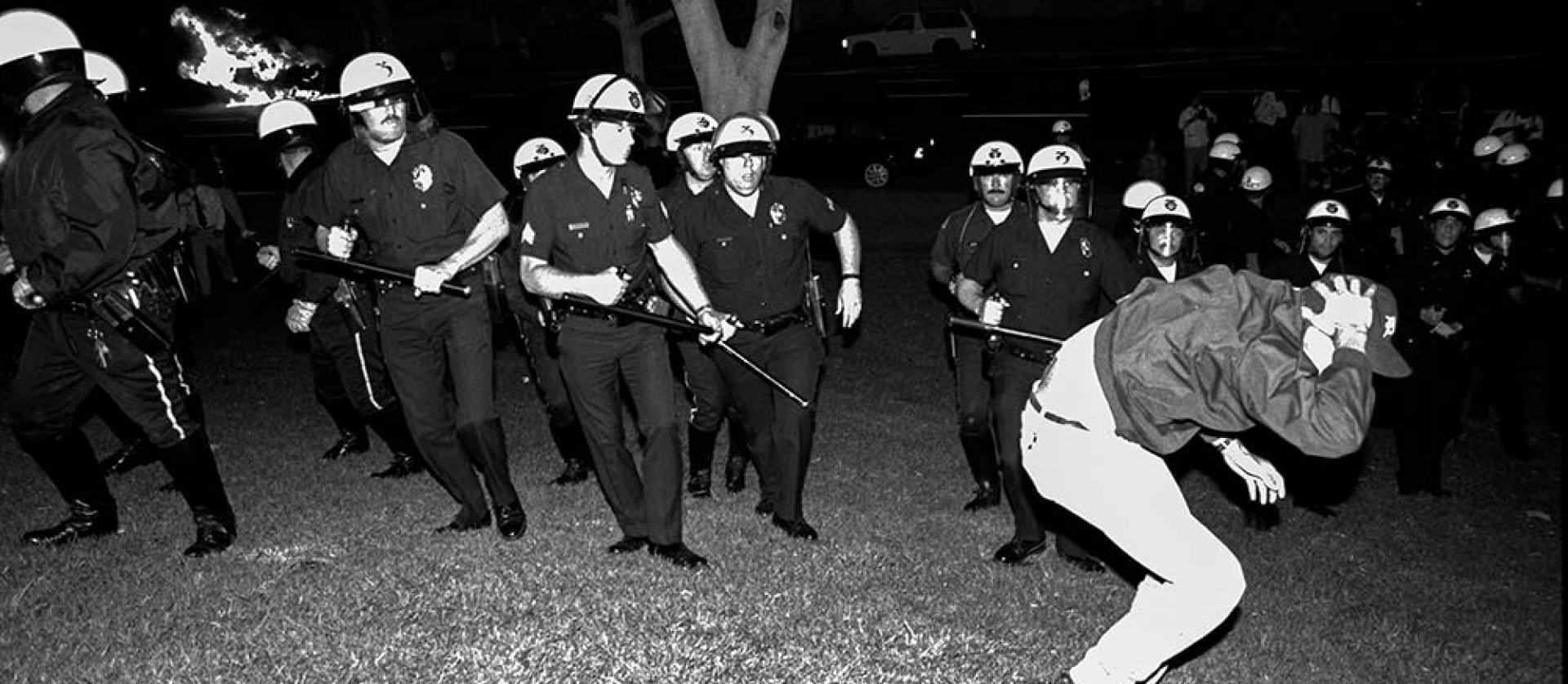Trying to Make It: The Rise, Collapse, and Attempted Revival of the American Dream during the 1992 Uprising in Los Angeles

By Tommy Nguyen, USC 22'
Introduction
“We are not thugs. We are respectable residents. We vote, we raise our children, we send them to school, we teach them right, we take them to church, we try to participate in the American Dream”1
-Maria Stanley testifying during the Webster Commission community hearings about the 1992 Uprising
The words of Maria Stanley, a resident of South Central Los Angeles that witnessed the 1992 Uprising first hand, are words that many residents of Los Angeles and the United States understood. The “American Dream” is not a new concept but one that was revitalized during the pursuit to make Los Angeles the capital of the world in the 1980s and 1990s under Mayor Tom Bradley’s administration. Equal opportunity to achieve the highest aspirations one can dream of was what every member of Los Angeles strived for. The success of the 1984 Olympics in Los Angeles, the first to make a profit, guided the rise of Los Angeles toward a true metropolis. Los Angeles was pitched as a trans-national city that represented the harmonious integration of immigrants and ethnic communities. The city would also be protected by the “best” police force in the country: the Los Angeles Police Department. This image was a facade for the underlying racial, economic, and geographical issues the city faced under a police department unable to adapt to the racial and cultural shifts of the city. Immigrants integrated into South Central Los Angeles, where declining jobs and rising poverty heightened ethnic tensions between the Korean, African American, and Hispanic populations that resided in a neglected and over-policed area. It was in this setting that the dreams and visions of the immigrant populations, city leaders, and police authorities would see a collapse on April 29, 1992.The culmination of all of these issues flared into a week-long destruction of Los Angeles after four white police officers were acquitted of beating motorist Rodney King.
The 1992 Uprising was a flashing point not only caused by the “not guilty” verdicts of the police officers involved in the Rodney King beating, but also a “history in the middle” that was the culmination of neglect and disillusion of the inequality and boiling tensions of Los Angeles. The violence and destruction of the uprising, while severe, was absorbed by local community members as another day in racial injustice and a flashback to the 1965 Watts Uprising, a previous uprising in the Watts area of Los Angeles caused by police brutality.
Through primary sources from the Webster Commission Community hearings, recorded interviews with residents and elected officials, films and literature inspired by the events in 1992, and various secondary sources, this paper analyzes the 1992 uprising from the perspective of what city officials and residents hoped Los Angeles to be before the uprising and their hopes of recovery from the ashes...
